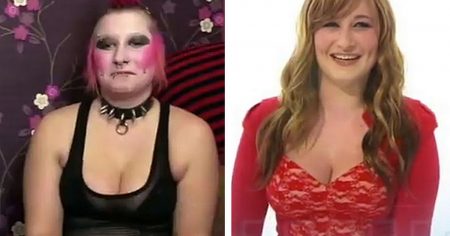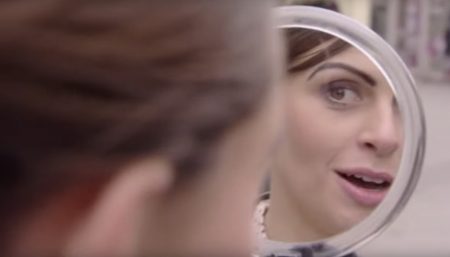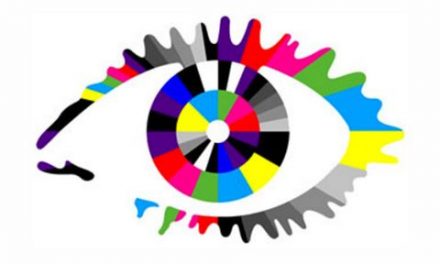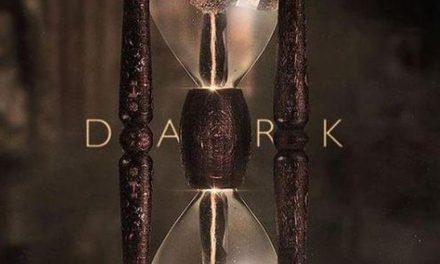Described as a “make-under” reality show, Snog Marry Avoid has been subject to scholarly debate and public criticism for equating “middle-class taste with a ‘natural’, desirable state of being” (Murphy, 2012, p.1). This blog will explore if transformational makeover TV enforces Western beauty stereotypes on a diverse British audience, with particular reference to industrial contexts and feminist readings of the texts. It will also adopt a critical discourse analysis to illuminate surrounding sociocultural issues concerning identity and “self-branding” in reference to Murphy (2012), Lewis (2013) and Skeggs (2009).
Reality TV “is at once one of the oldest of the medium’s genres and the newest” (Palmer, 2016, p.1). Makeover and lifestyle formats tend to be associated with times of relative uncertainty and social fluidity where people look to popular forms of advice (Lewis, 2008, p.2), such as magazines and manuals for guidance and assurance. Genre conventions of the hybrid “reality subgenre” (Ouellette & Hay, 2008, p.2) that is makeover television includes “experts” and transformation. This draws upon historical influences from advice columns, agony aunts, Victorian etiquette manuals and lifestyle magazines.
Snog, Marry, Avoid claims that its mission is “to reveal a nation of stunning natural beauties who are currently hiding behind layers and layers of slap” [Bradshaw, 2008). Adhering to well-established genre conventions of makeover reality TV, techniques such as humiliation and exhibitionism are incorporated throughout the series. Viewers watch the participant undergo a transformation in regard to their physical appearance under the direction of the expert before their new “made-under” self is uncovered – a moment commonly referred to as “the reveal”. The “expert” role is occupied by the “Personal Overhaul Device” (P.O.D), an animated matrix with a feminine inflection. The lack of a physical form gives “her” license to make scathing comments such as “your skin looks like a leathery old suitcase” without creating an industry backlash or reputational fall-out. The unique non-physical form of the expert of Snog Marry Avoid means that its credentials are rendered unquestionable. Yet it is because of this very absurdity that P.O.D can play said character role whilst simultaneously lacking any justifying accreditations. Calling upon the genre convention of “self-reflection” participants must justify their fashion tastes to the “expert”, establishing the idea that “people are individually, rather than structurally, accountable for their own taste” (Murphy, 2008, p.32). During this sequence, the participant’s style is conflated by P.O.D with a variety of personal flaws – ignorance, irresponsibility and a pathological desire for attention. The rationalisations provided by the participant for their choice of makeup and clothing are perpetually deemed derisory by P.O.D, who “fails to compute” the reasoning they choose to present themselves in such an extravagant manner. Said extravagant traits, which vary from “excessive amounts” of makeup, to alternative fashion choices, are regarded as “deficient performances of selfhood that obstruct career progression and limit chances for romantic or sexual success” (Murphy, 2008, p.32). The “make-under” process is thus constructed in production as an “intervention”, aiming to cure the participant of their apparent issues. The goal of the makeover is to “transform participants towards a state of purported corporeal authenticity, which, it is postulated, affords both a recognisable sense of agency and potential productivity” (Murphy, 2008, p.39).
The expert’s guise of intellect serves to emphasise the preferred reading of the participant’s errors; the difference in senses of styles is coded to form a source of humour and tension. This “make-under” is represented as an “agent of care” (Weber, 2009, p.15) – the subjects would be forced to live in a continued existence in the unsatisfying, vain “before” lifestyle without this intervention. However, audiences may interpret an oppositional reading (Hall, 1980, pp. 117-127) of the polysemic text, conforming to Jeremy Butler’s idea of “analytic stylistics” (2010, p.3). By decoding that all remarks are based on opinion, it is only through the expert’s lens that the participant is considered insufficient; prior to the analysis participants are frequently shown to be satisfied with their sense of style. The notion that makeover television serves to reflect the best interests of its participants is challenged by P.O.D’s mission, which could reflect a homogenising intent – participants emerge from the “make-under” bearing similar, demure afflictions that could be considered evocative of “an English teacher who’s been given [high street clothing store] Oasis vouchers for her 50th birthday” (Ravenhill, 2009). This transformation removes personal identity and the ethics of individualism are uncritically activated. Furthermore, the common resistance from the participant to the instructions relayed by the expert may be pathologized as the wilful flouting of authority (Philips, 2005, p.223).
As Lewis observes, “the makeover television show [is] a mode of programming that only emerged on primetime television relatively recently” (2013, p.1). Commissioned in 2008, Snog Marry Avoid places within the “era of plenty” in accordance to John Ellis’s British TV categorisation (2000, p.61). This means that ‘Makeover/Lifestyle television programming can be understood as the product of both a significant socio-cultural trend and as a media form marked by distinct questions of production, textual aesthetics, and reception’ (Lewis, 2013, p.4). The notion of ‘natural beauty’ that P.O.D promotes is one that conforms to social understandings of class and the patriarchal pressure for women to conform to societal standards of aesthetics and femininity. Those who apply to be on Snog Marry Avoid could therefore be engaging in a rebellious gesture of applying excessive makeup to form an archetypical identity as a form of “self-branding”. This is evident in season 6 episode 7, in which P.O.D “makes-under” a man – reflecting the conventional normative heterosexual visuals of masculinity. This serves to draw implied comparisons throughout the series between good taste and the normative social expectations of gender presentation.
Within this programme, the participants are often introduced in sequences which culminate in a “night on the town”. These productions are often edited to involve excessive alcohol consumption, provocative dancing in seedy nightclubs and other behaviour which is unsubtly implied to be disorderly and garish. These images form an essential component of our body image; that is, how we think, feel, and behave with regard to our physical attributes (Grogan, 2007). This in turn, is influenced by the socio-cultural distinction between middle-class polite civility and the supposedly coarse, indecorous nature of the working class (Murphy, 2008, p.24).
The participants often display a hyperfeminized, overstated appropriation of conventional components apparent in the archetypical presentation of Western beauty presumed by the series, such as long hair (extensions), bronzed skin (fake tan) and revealing clothes. This presents the participants as deluded objects of entertainment in accordance to the uses and gratifications theory (Blumer & Katz, 1974, p.74) for an audience that ‘knows better’; a form of exhibitionism that acts as a genre convention of transformational TV. BBC Three’s audience is therefore encouraged to laugh at the positioning of the women who wear “a dress that doesn’t flatter [them], an uneven streak of foundation, a dodgy hair dye job: signs of failure, mocked because they signal ineptness at mastering [their] image – the ultimate sin of womanhood” (McCombes, 2011).
Snog Marry Avoid exploits public opinion to encourage the “slap addicts” to undergo the transformation. The central narrative arc within each episode is placed upon a public vox pop survey, asking whether the British public would want to “snog”, “marry”, or “avoid” the participant prior to the “make-under”. The sequence invariably concludes with the subject of the episode being informed that the majority choose to ‘avoid’ them, often shaming the unwilling participant and resigning them to the necessity of the make-under, demonstrating the imbalance in power between expert and subject. The social implications of the question ‘snog, marry or avoid’ are instrumental to the makeover show legitimising the male gaze (Mulvey, 1975) and enforcing heteronormative standards by its insinuation that all women should present themselves in a manner that is considered the most attractive to potential male suitors. This vox pop sequence demonstrates the distinct social classifications attached to the image of respectability. The first two values, sexual attractiveness (snog) and propriety (marry), are promised unto participants who comply to P.O.D’s demands, demonstrating the cultivation of ‘proper’ taste broadcast on a “traditional” British channel; an “embodiment of self that is not merely tolerated, but actively endorsed by fellow citizens” (Murphy, 2008, p.34). Those who select to “marry” the “made-under” participant habitually qualify their decision by describing the woman as looking “down-to-earth” and “sophisticated”. This in turn plays into the social expectations of women, linking marriageability to the notion of respectability. Participants also frequently emphasise the hypothetical proposals as the pinnacle of approval. Therefore, the inversion, the distasteful ‘before’ appearances, presents participants not only as unsuitable as life partners, but also as incapable of performing and maintaining valuable forms of respectable character.
While public service television focused traditionally on cultural transformation – to ‘inform, educate and entertain’, contemporary makeover programmes habitually focus on personal transformation. The popularity and emergence of reality makeover/lifestyle formats could therefore be viewed as an effect of the increasing competition and deregulation of the television market where factual TV is concerned. Prior to its digitalisation, BBC Three acted as a traditional broadcaster with a strong online presence, intending to provide “high quality public service broadcasting” to “younger audiences (16-34 year olds)” (BBC Trust, 2013, p.1). Shareable media in the form of highlight videos, such as “Scotland’s No1 Male Barbie”, are uploaded to the official BBC social channels prior to broadcast to encourage higher audience viewing figures. This example went viral due to celebrity blogger Perez Hilton featuring it on his Twitter, which is an example of online “buzz” marketing. BBC Three’s target demographic is frequently appealed to throughout consumer culture in the 21st century, but particularly within marketing strategies and lifestyle media, in which the body is conceived as a vehicle for personal pleasure and self-expression, with taste in modes of bodily maintenance held to be outer realisations of inner essence (Featherstone, 1991). Whilst the BBC is a public service broadcaster and “cannot be used for advertising or promotions” (BBC, n.d.), it is argued by Raphael that makeover TV exists to generate a profit in its broadcast by shifting to product placement advertising (2004, pp. 119–136). This practise influences the production of makeover shows on commercial channels such as Back to Mine (Scantlebury, 2018), in which for the “first time ITV (will) carry ad-funded broadcast editorial content as well as branded content on the Hub that provides viewers with an immersive brand experience.” (Daglish, in ITV Media, 2018). However, Chaput argues that reality TV “valorizes individuation within late capitalism by abandoning a culture in which the individual is forfeited to mass consumption and replacing it with a culture that preserves such individuality as the prerequisite for customized consumption” (2011, p.8).
Upon commission of a fifth season in 2012, the format of Snog, Marry, Avoid was revised to comprise of a ‘road show’ element. This saw the infamous P.O.D and the presenter, Ellie Taylor, travel across the country each week to draw attention to regional variations in beauty standards. Examples seen in Snog Marry Avoid include the Liverpudlian ‘Scouse brow’ and the ‘Brum bum’ seen in Season 6, Episode 7. Through its judgement of regional identities, the show creates a distinction between location and acceptable forms of fashion. Taylor is, under P.O.D’s persuasion, encouraged to transform herself using these regional identities to showcase the difference in style for humorous effect, before P.O.D demands she returns to her ‘natural’ beauty at the end of the show. Regularly complimented throughout the series on their ‘tasteful’ beauty ideals by P.O.D, Taylor’s, and former presenter Jenny Frost’s compliance with the middle-upper class beauty expectations of women are implied to explain their success, rather than focusing on their talents and success in their own right. Yet Essex-born Taylor and Manchester habitant Frost originate from locations that are not perceived as an English, upper-class ‘respectable’ municipality. It is particularly notable how an Essex-born woman was chosen to present the makeover TV show on the BBC – the location holds a reputation as synonymous with nouveau riche excess drawn on and furthered by the ‘gauche’ docu-soap The Only Way is Essex (Blakely, 2010).
The editorial choice to include a touring component to the programme indulges in geographical typecasts which enables the conflation of local characteristics and ‘poor’ taste. Snog Marry Avoid could therefore be accused of regulating regional differences, which are framed as abnormal and aberrant. BBC Three’s younger, influential target audience may decode this negative portrayal of beauty and internalise the scathing remarks, leading to a rejection of culture and adopting an appearance that can be read as the subjective “tasteful”. The imperious agenda of erasure refers to lower-class economies and homogenising standards – subjects are obligated during the programme to conform to the tastes of the “particular-universal” (Skeggs, 2009, p.629) middle class, highlighting their failure to conform to middle-class standards of respectability (Skeggs, 2009, p.637). As per Lewis, “makeover television, concerned as it is with targeting, transforming, and optimizing every aspect of ordinary people’s identities and lifestyles, represents an especially rich site for understanding the shifting dynamics of selfhood and cultural value today” and that “the domestic and personal concerns asked by makeover television –far from being trivial – go to the heart of a range of questions facing late modern societies” (2013, p.1). In a 21st century society subjugated by a ‘post-class’ magniloquence, lifestyles that defer from normative values are marked as deficient deviations. The “growing ‘stylization of life’ [which] marks an apparent displacement of traditional class cultures with cultures of consumption” (Lewis, 2008, p.8) focuses on such classist tensions. Like other makeover TV series, such as TLC’S What Not to Wear (Daniel, 2003-2013) Snog Marry Avoid uses consumption as a passage to transformation, highlighting the construction of ‘good’ taste as premised on culturally contingent grounds (Murphy, 2008, p.32).
In conclusion, makeover TV’s focus and obsession with identity, class, gender, and sexuality illustrate significant shifts in contemporary culture – the concept of “reinvention” has found its way into every aspect of our social world. However, the essence of reality TV is subjective – others may decode the text to be harmless fun and argue that transforming willing members of the public to a more “socially acceptable” look may be beneficial. Others argue that transformational TV, especially programmes concerned with sense of self and identity, remove personal individuality to conform to a middle-class idealised, largely unobtainable existence. The transformations present within Snog Marry Avoid assume the broad financial viability of these practices and rests on the unscrutinised privilege of middle-class taste by adhering to the contemporary norms of femininity and subordination.
Sara Heritage is a First Class TV and Radio graduate from the University of Salford. Her research interests include sociological dissection of the 21st Century media landscape and applying theory through a feminist lens. She blogs at https://saraheritage.wordpress.com/.
Works Cited:
BBC, (n.d.). BBC – Makeover Programmes: Guidance in Full – Editorial Guidelines. Retrieved from https://bbc.com/editorialguidelines/guidance/makeover-programmes#guidanceinfull
BBC Trust, (2013). BBC Three Service Licence. London: BBC. Retrieved from http://downloads.bbc.co.uk/bbctrust/assets/files/pdf/regulatory_framework/service_licences/tv/2013/bbc_three_sep13.pdf
Blakely, G. (2010). Why I love Orange County: That’s Essex – home of spray tan, hard graft and the hottest new show on TV. Daily Mail Online. Retrieved December 15th, 2018, from https://dailymail.co.uk/tvshowbiz/article-1321158/Why-I-love-Orange-County-Thats-Essex–home-spray-tan-hard-graft-hottest-new-TV.html
Blumler, J. G., & Katz, E. (1974). The uses of mass communication: Current perspectives on gratifications research. Beverly Hills: Sage Publications.
Bradshaw, J. (Producer). (2008). Season 1 Episode 1 [Television series episode]. In H. Lansdown. (Executive Producer) Snog Marry Avoid. London: Remarkable Television.
Bray, R. (Producer). (2013). Season 6 Episode 7 [Television series episode]. In H. Lansdown. (Executive Producer) Snog Marry Avoid. London: Remarkable Television.
Butler, J. (2010). Television style. New York: Routledge
Chaput, C. (2010). Affect and Belonging in Late Capitalism: A Speculative Narrative on Reality TV. International Journal Of Communication, 5(20). Retrieved from https://ijoc.org/index.php/ijoc/article/view/552/501
Daniel, R. J. (Director). (2003-2013). What Not to Wear. [Television programme]. New York: BBC Productions USA.
Ellis, J. (2000). Seeing things. London: I.B. Tauris.
Featherstone, M. (1991). The body in consumer culture. In M. Featherstone, M. Hepworth & B. S. Turner, The body: social process and cultural theory (pp. 170-196). London: SAGE Publications.
Grogan, S. (2007). Body-image: Understanding body dissatisfaction in men, women and children. New York: Routledge.
Hall, S. (1980). Encoding and Decoding. In Hall, Stuart (ed.) Culture, Media, Language: Working Papers in Cultural Studies. 1972-1979. London: Hutchinson.
ITV Media. (2018). ITV and Dunelm join forces, announcing brand-new dating and home makeover show, Back to Mine. Retrieved from https://itvmedia.co.uk/news/itv-and-dunelm-join-forces-announcing-brand-new-dating-and-home-makeover-show-back-to-mine
Lewis, T. (2008). Revealing the Makeover Show. Continuum, 22(4), 441-446. Palmer, G. (Ed.). (2016). Exposing lifestyle television: The big reveal. London: Routledge.
Lewis, T. (2008). Smart Living: Lifestyle Media and Popular Expertise (Vol. 15). New York: Peter Lang Publishing.
McCombes, S. (2011). In Defence of Fake Beauty. The F Word: contemporary UK feminism. Retrieved 17th December, 2018, from http://www.thefword.org.uk/features/2011/12/in_defence_of_fake
Murphy, C. (2012). Snog, Marry or Avoid? Class, taste and the making of selfhood in makeover television. Sydney: University of Sydney. Retrieved from https://ses.library.usyd.edu.au/handle/2123/8864
Mulvey, L. (1975). Visual Pleasure and Narrative Cinema. Screen, 16(3), 6-18. DOI: 10.1093/screen/16.3.6
Ouellette, L., & Hay, J. (2008). Better Living through Reality TV: Television and Postwelfare Citizenship. Malden, Mass.: Blackwell Publishing.
Raphael, C. (2004). The political economic origins of reali-TV. In S. Murray & L. Ouellette (Eds.) Reality TV: Remaking television culture. New York: New York University Press.
Ravenhill, M. (2009). Snog, Marry, Avoid will save us from our tears. The Guardian. Retrieved 23rd December, 2018, from https://theguardian.com/culture/2009/may/04/snog-marry-avoid-mark-ravenhill
Skeggs, B. (2009). The moral economy of person production: the class relations of self-performance on ‘reality’ television. The Sociological Review, 57(4), 626-644. doi: 10.1111/j.1467-954X.2009.01865.x
Scantlebury, M. (Executive Producer). (2018). Back to Mine. [Television programme]. Salford: Shiver.
Weber, B. R. (2009). Makeover TV: Selfhood, Citizenship and Celebrity. Durham, N.C.: Duke University Press.










